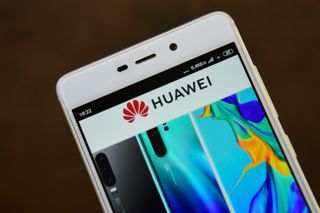Huawei's OS Could Debut in China This Year, Worldwide by 2020

Huawei wasn't kidding about being ready to replace Android and Windows. The head of the company's consumer division, Richard Yu, told CNBC on Wednesday that its operating system could debut in China by the end of 2019 and in the rest of the world during the first or second quarter of 2020.
Yu also reiterated that releasing its own operating system is Huawei's Plan B. "We don’t want to do this but we will forced to do that because of the U.S. government," he told CNBC. "I think the U.S., this kind of thing, will also not only be bad news for us, but also bad news for the U.S. companies because we support the U.S. business, so we will be forced to do this on our own. We don’t want to do this but we have no other solution, no other choice."
That statement meshes with Huawei's other discussions about its operating system. The company started working on its own platform after the U.S. started investigating it (as well as ZTE) in 2012. It's continued to use Android and Windows for its smartphones and PCs, respectively, in the interim. Ditching the platforms wouldn't be the company's preferred course of action--it wants to continue using operating systems familiar to its customers.
U.S. restrictions might not allow that to happen. Huawei was added to the Entity List by the U.S. Department of Commerce on May 15, and even though the Bureau of Industry and Security issued a temporary license to let companies work with Huawei for another 90 days, that merely delays Huawei's problems. Some companies don't even seem to care about the temporary license, with ARM reportedly cutting ties with the company indefinitely.
Losing ARM could be catastrophic for Huawei. The company said it could make its own chips if needed, but if that hardware is based on ARM's designs, Huawei would have to completely redesign them. That could also lead to problems for the company's operating system. It was almost certainly made for use with devices built around ARM-based processors; changing the silicon would mean changing the software as well.
Porting an operating system is no easy feat--just look at Windows on ARM for an example. We wonder if Yu's timeline took that into account. Either way, Huawei's desire to keep using Android and Windows has been made perfectly clear, and all the talk about its own operating system is probably meant to reassure shareholders more than anything else. The company doesn't want a pesky little thing like a trade war to put an end to its market dominance.
Stay On the Cutting Edge: Get the Tom's Hardware Newsletter
Get Tom's Hardware's best news and in-depth reviews, straight to your inbox.

Nathaniel Mott is a freelance news and features writer for Tom's Hardware US, covering breaking news, security, and the silliest aspects of the tech industry.